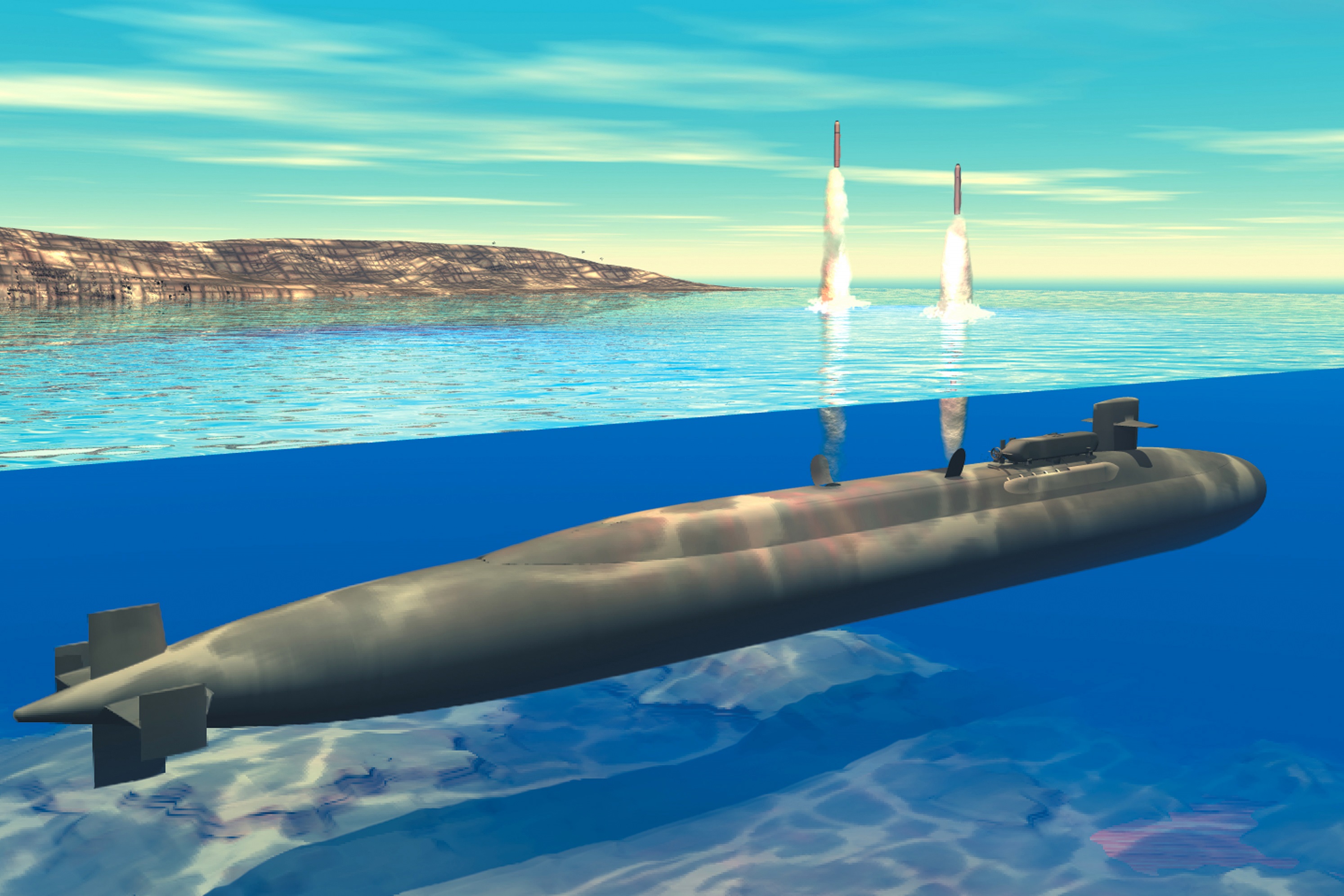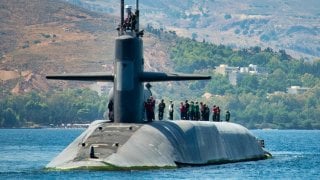The U.S. Navy Has 2 Aircraft Carriers and 1 Ohio-Class Missile Sub 'Watching Iran'
The U.S. Navy’s Ohio-class cruise missile submarine, USS Georgia (SSGN-729), has arrived in the Middle East, sending a clear signal to Iran and its proxies.
Summary and Key Points: The U.S. Navy’s Ohio-class cruise missile submarine, USS Georgia (SSGN-729), has arrived in the Middle East, sending a clear signal to Iran and its proxies.
-Equipped with over 150 Tomahawk missiles, Georgia’s deployment comes as part of a strategic deterrence following recent tensions in the region.
-The submarine, which had been operating in the Mediterranean, is now within the U.S. Central Command’s area of responsibility.
-Georgia joins two Nimitz-class carrier strike groups, enhancing the U.S.’s capabilities in the region, showcasing readiness to respond to any provocations by Iran or its allied groups.
A U.S. Navy Ohio-class SSGN Has Arrived in the Middle East
Georgia should be on the minds of the leadership in Tehran this week – and we're not talking about the Hoagy Carmichael song later made famous by legendary soul singer Ray Charles. Rather it is the United States Navy's Ohio-class cruise missile submarine USS Georgia (SSGN-729) that should have the attention of the Islamic Republic of Iran.
It was a month ago that United States Secretary of Defense Lloyd Austin ordered the submarine, which is armed with more than 150 Tomahawk land-attack cruise missiles to the Middle East. Normally, the movements and deployments of the U.S. Navy's nuclear-powered ballistic missile and cruise missile submarines are a matter of the utmost secrecy.
We're clearly not in normal times.
The deployment of the USS Georgia was meant to send a message to Iran and its proxies including Hezbollah and Hamas. On Tuesday, Pentagon spokesperson Major General Pat Ryder confirmed that SSGN-729 has arrived in the Middle East, as it "transited into the CENTCOM AOR" – meaning it is operating in the United States Central Command's area of responsibility.
The Ohio-class SSGN had been operating for several weeks in the Mediterranean, but it has now passed through the Suez Canal and is now likely capable of striking positions through the Islamic Republic. USS Georgia is likely in close proximity to the U.S. Navy's two Nimitz-class nuclear-powered aircraft carrier strike groups (CSG), which were also deployed to deter further escalation in the region.
A Cruise Missile Submarine
USS Georgia is just the second U.S. Navy vessel named for the Peach State – after the Virginia-class battleship (BB-15), which took part in convoy escort duties during the First World War. There was also the American gunboat steamer USS State of Georgia that served in the Union Navy in the Civil War.
The current USS Georgia is one of the 18 Ohio-class nuclear-powered ballistic missile submarines (SSBNs) that were built for the U.S. Navy between 1976 and 1997, and one of the four converted to an SSGN per the Strategic Arms Reduction Treaty (START II).

That treaty, which was agreed in June 1992, limited the number of U.S. Navy strategic missile submarines to 14 beginning in 2002. The Department of Defense made the decision to convert the four oldest boats of the class, including SSBN-729, into a cruise missile submarine.
Though no longer part of the U.S. military's nuclear triad, the SSGNs should still be seen as extremely well-armed vessels, one that should give Tehran pause.
During the conversion process, the four SSBNs had their 24 missile tubes that held Trident Submarine Launched Ballistic Missiles (SLBM) removed and replaced with 22 missile tubes that could hold seven Tomahawk Land Attack Missiles (TLAM) each, for a total of 154 missiles.
The Ohio-class SSGNS can also host up to 66 Special Forces (SOF) personnel, while the two missile tubes on the boats have been modified to lockout-out chambers for Dry Deck Shelter (DDS). That conversion resulted in the vessels trading their SLBM control-related facilities for the Common Submarine Radio Room (CSRR) and two High-Data-Rate antennas. That greatly expanded the communication capabilities of the vessels and each was essentially equipped with the necessary systems to act as a forward-deployed Small Combatant Joint Command Center for the Special Forces onboard.
While it is unlikely that special operators will be conducting any covert missions in Iran, Tehran should note the capabilities of the USS Georgia.
Author Experience and Expertise: Peter Suciu
Peter Suciu is a Michigan-based writer. He has contributed to more than four dozen magazines, newspapers, and websites with over 3,200 published pieces over a twenty-year career in journalism. He regularly writes about military hardware, firearms history, cybersecurity, politics, and international affairs. Peter is also a Contributing Writer for Forbes and Clearance Jobs. You can follow him on Twitter: @PeterSuciu. You can email the author: [email protected].
Image Credit: Creative Commons and/or Shutterstock.


